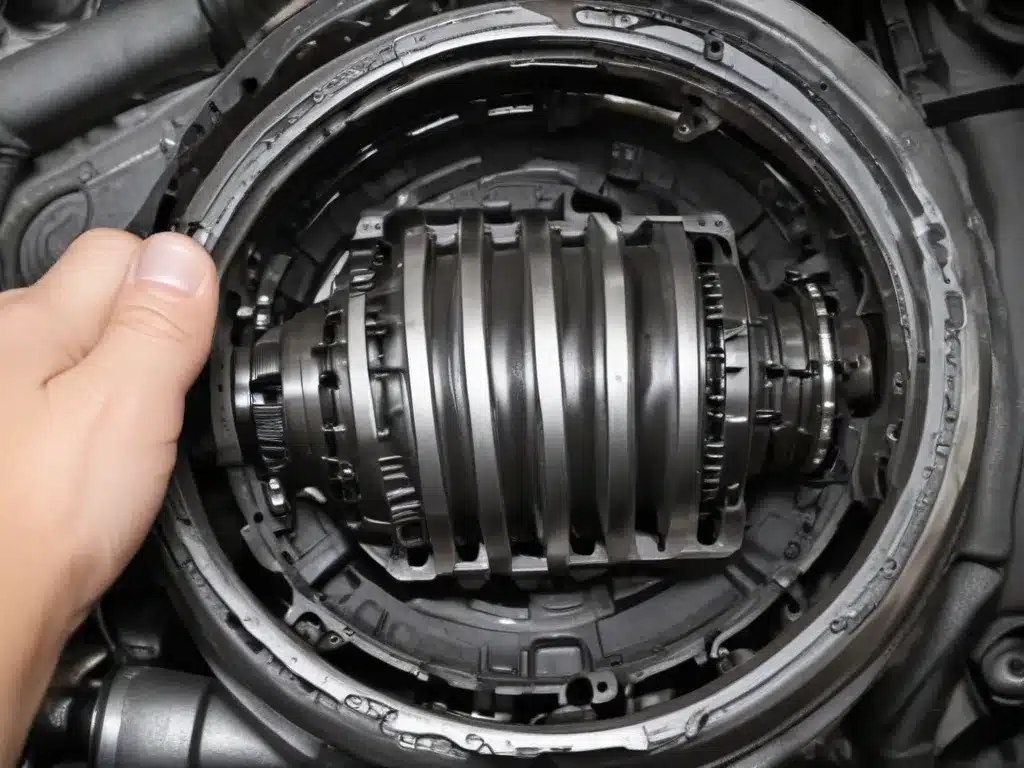
Understanding Automatic Transmission Behavior
As the proud owner of a vehicle with an automatic transmission, I’ve learned that these complex systems can be a bit of a mystery. But fear not, my fellow gearheads! Today, I’m going to take you on a journey to unravel the secrets of your trusty transmission and help you diagnose any potential issues.
Now, let’s start with the basics. Your automatic transmission is the unsung hero of your car, seamlessly shifting gears as you zip down the road. It’s a marvel of engineering, combining a fluid-filled torque converter, planetary gear sets, and a complex network of sensors and solenoids to deliver a smooth, effortless driving experience. But like any intricate system, things can sometimes go awry.
So, how do you know if your automatic transmission is in need of some TLC? Well, my friends, it all comes down to the symptoms. By paying close attention to the way your car behaves, you can often pinpoint the root of the problem and take the necessary steps to get it back in tip-top shape.
Identifying Common Transmission Symptoms
Let’s start with the most telltale sign of transmission trouble: shifting issues. Have you noticed your car hesitating or struggling to change gears? Maybe it’s taking longer than usual to shift, or you’re feeling a sudden jerk or delay when the transmission engages. These could be signs of a problem with the transmission’s internal components, such as worn clutches or faulty solenoids.
But shifting problems aren’t the only symptoms to watch out for. Have you noticed any unusual noises coming from under the hood? A whining, humming, or clunking sound could indicate a problem with the gears or bearings inside the transmission. And if you’re experiencing a sudden loss of power or a decrease in fuel efficiency, that could be a sign of a more serious issue, like a slipping or malfunctioning torque converter.
And let’s not forget about the dreaded “check engine” light. This little guy can be a real troublemaker, lighting up for all sorts of reasons, including transmission-related problems. So if that pesky light starts blinking, don’t ignore it – it could be trying to tell you something important about the health of your transmission.
Pinpointing the Problem
Now that you know what to look for, let’s dive a little deeper into the specific symptoms and what they might mean. Picture this: You’re cruising down the highway, and suddenly, your car starts acting up. It’s shifting gears erratically, and you can feel the transmission struggling to keep up. What could be the issue?
Well, one possible culprit could be a problem with the transmission fluid. If the fluid is low, contaminated, or has the wrong viscosity, it can cause all sorts of shifting problems. Another potential issue could be a malfunctioning solenoid, which is responsible for controlling the flow of fluid and engaging the various clutches and gears within the transmission.
But let’s not forget about the good old-fashioned mechanical failures. A worn-out clutch pack or a damaged planetary gear set can also lead to shifting woes, and in more severe cases, even complete transmission failure. And let’s not forget about the torque converter – if that thing starts slipping or locking up, you can say goodbye to a smooth, seamless driving experience.
Seeking Professional Help
I know, I know – it can all seem a bit overwhelming. But don’t worry, my friends, there’s help out there. When it comes to diagnosing and repairing automatic transmission problems, it’s always best to seek the guidance of a professional.
Enter the folks over at https://autooilandfluid.com/. These transmission experts have seen it all, and they know exactly how to get your car back on the road. Whether it’s a simple fluid change or a more complex repair, they’ve got the skills and the know-how to get the job done right.
So, the next time you’re experiencing those pesky transmission symptoms, don’t hesitate to reach out to the team at https://autooilandfluid.com/. They’ll be more than happy to help you diagnose the problem and get your car back in tip-top shape. And who knows, they might even throw in a few helpful tips and tricks to keep your transmission running like a well-oiled machine.
Preventive Maintenance: The Key to a Healthy Transmission
Of course, the best way to avoid costly transmission repairs is to keep up with regular maintenance. That means getting your transmission fluid changed at the recommended intervals and keeping an eye on any warning signs that something might be amiss.
Now, I know what you’re thinking – “But changing the transmission fluid? Isn’t that, like, a major hassle?” Well, my friends, not if you’ve got the right team on your side. The folks at https://autooilandfluid.com/ make the whole process a breeze, getting you in and out in no time flat.
And speaking of preventive maintenance, let’s talk about those pesky warning lights. If that check engine light starts flashing, don’t ignore it! Get it checked out right away, because it could be a sign of a bigger problem lurking beneath the surface. The sooner you catch an issue, the easier (and cheaper) it is to fix.
So, there you have it, folks – your comprehensive guide to diagnosing and preventing automatic transmission problems. Remember, a little bit of vigilance and a whole lot of TLC can go a long way in keeping your car’s transmission running like a dream. And if you ever find yourself in a sticky situation, just know that the team at https://autooilandfluid.com/ has got your back.
Now, go forth and conquer those transmission woes, my fellow gearheads. And don’t forget to have a little fun along the way – after all, driving should be an adventure, not a chore. Happy motoring!


